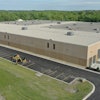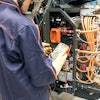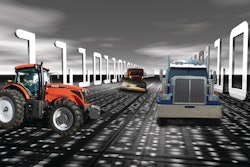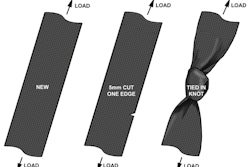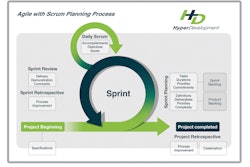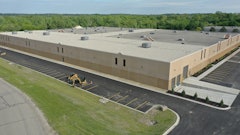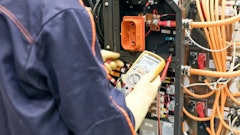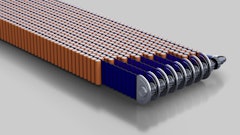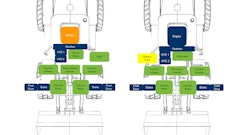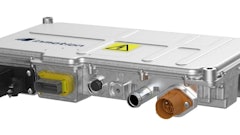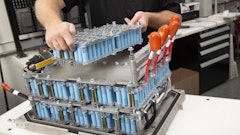Sauer-Danfoss has developed a combined steering unit and electrohydraulic steering valve called OSPE: “OSP” for normal manual steering-wheel-activated steering and “E” for electro hydraulic steering. It’s activated by a signal either from GPS, vehicle controller or a steering wheel sensor.
The OSPE steering unit helps simplify hydraulic system architecture. The high level of integration minimizes the need for additional components and provides OEMs with a complete package that has been designed, developed, and tested for optimal performance. OSPE offers selectable reactive and non-reactive steering modes, load sensing and open center options, variable steering ratio and a “safe state.”
“Today’s vehicles require versatile solutions that increase productivity, reduce operator fatigue and provide a safe, comfortable working environment,” says Tom Rudolph, product portfolio manager. “With the new OSPE steering unit we are able to introduce features that help improve vehicle performance and operator comfort, while facilitating compliance with Machinery Directive 2006/42/EC.”
“Recent European safety legislation has revised Machinery Directive 2006/42/EC and applies to all vehicles built in or shipped to Europe after Dec. 29, 2009,” says Rudolph. “This means that our customers must perform and document a hazard and risk analysis for all vehicle functions. The new OSPE steering unit has been designed to comply with this new legislation and provide the basis for a safe state system architecture [i.e., Category 2 (ISO 25119)]. As a result, OEMs can speed up steering system development and certification, reduce costs, and bring vehicles to market faster.”
The OSPE steering unit offers a defined ‘safe state’. In the event of an electronic or hydraulic system malfunction, this option, activated by an external watchdog controller, can isolate the electrohydraulic section of the steering valve to protect the steering system. Another safety feature ensures that, in electrohydraulic steering (non-reactive) mode, the steering ports from the OSP will not be blocked. This is achieved with an extra connection from the hydrostatic steering unit to the cylinder. iThis keeps the steering wheel fully operational and the driver in control.
Whether driving on- or off-road, selectable reactive and non-reactive steering modes ensure that the vehicle will steer with a firm, automotive feel due to the OSPE’s ability to automatically return to center. OSPE also enables reaction steering on vehicles with an auto-steering function.
In combination with Sauer-Danfoss’ PVED-CL digital actuator and SASA steering sensor, the OSPE enables vehicle operators to fine-tune steering performance. The PVED-CL digital actuator incorporates software optimized for tractors and articulated vehicles, while the SASA steering sensor detects the absolute position and speed of the steering wheel.
With this system, the operator can adjust the number of times the steering wheel is turned, from stop-to-stop, in order to adapt steering performance to suit specific driving conditions. It is also possible to adjust the steering ratio automatically, dependent on the speed of the vehicle. The result is a solution that not only provides additional flexibility in vehicle system design, but also helps improve productivity and reduce fatigue.
“Using ISOBUS auto-guide messages, the PVED-CL actuator enables direct electric interface for GPS auto-steering systems, joysticks or quick steering for ag and construction vehicles,” says Rudolph.”

